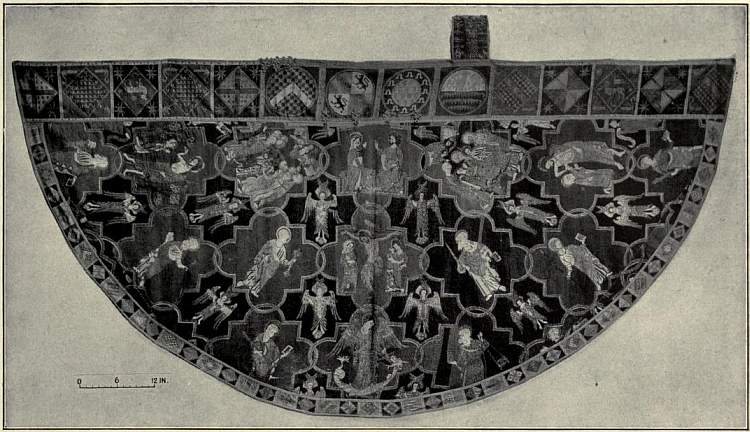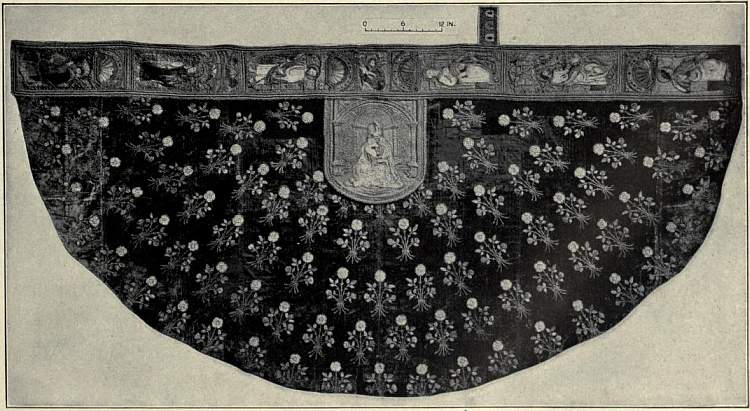 |
| Fig. 2.—THE SYON COPE. (English, 13th Century.) |
The medallions with which it is embroidered contain representations of Christ on the Cross, Christ and St Mary Magdalene, Christ and Thomas, the death of the Virgin, the burial and coronation of the Virgin, St Michael and the twelve Apostles. Of the latter, four survive only in tiny fragments. The spaces between the four rows of medallions are filled with six-winged cherubim. The ground-work of the vestment is green silk embroidery, that of the medallions red. The figures are worked in silver and gold thread and coloured silks. The lower border and the orphrey with coats of arms do not belong to the original cope and are of somewhat later date. The cope belonged to the convent of Syon near Isleworth, was taken to Portugal at the Reformation, brought back early in the 19th century to England by exiled nuns and given by them to the Earl of Shrewsbury. In 1864 it was bought by the South Kensington Museum.
 |
| Fig. 3.—COPE OF BLUE SILK VELVET, WITH APPLIQUÉ WORK AND EMBROIDERY. |
In the middle of the orphrey is a figure of Our Lord holding the orb in His left hand and with His right hand raised in benediction. To the right are figures of St Peter, St Bartholomew and St Ursula; and to the left, St Paul, St John the Evangelist and St Andrew. On the hood is a seated figure of the Virgin Mary holding the Infant Saviour. German: early 16th century. (In the Victoria and Albert Museum, No. 91. 1904.)
